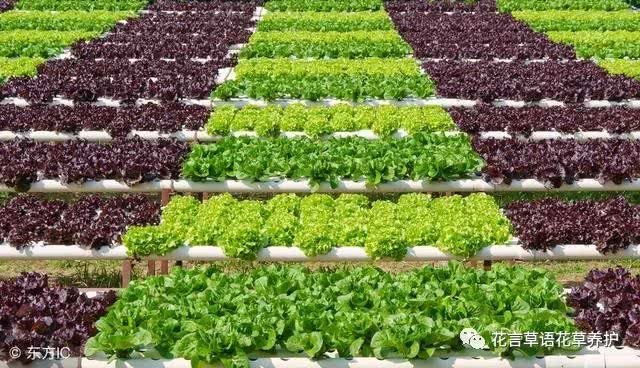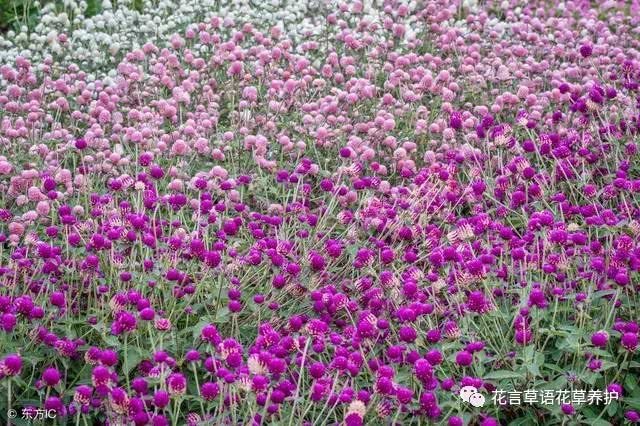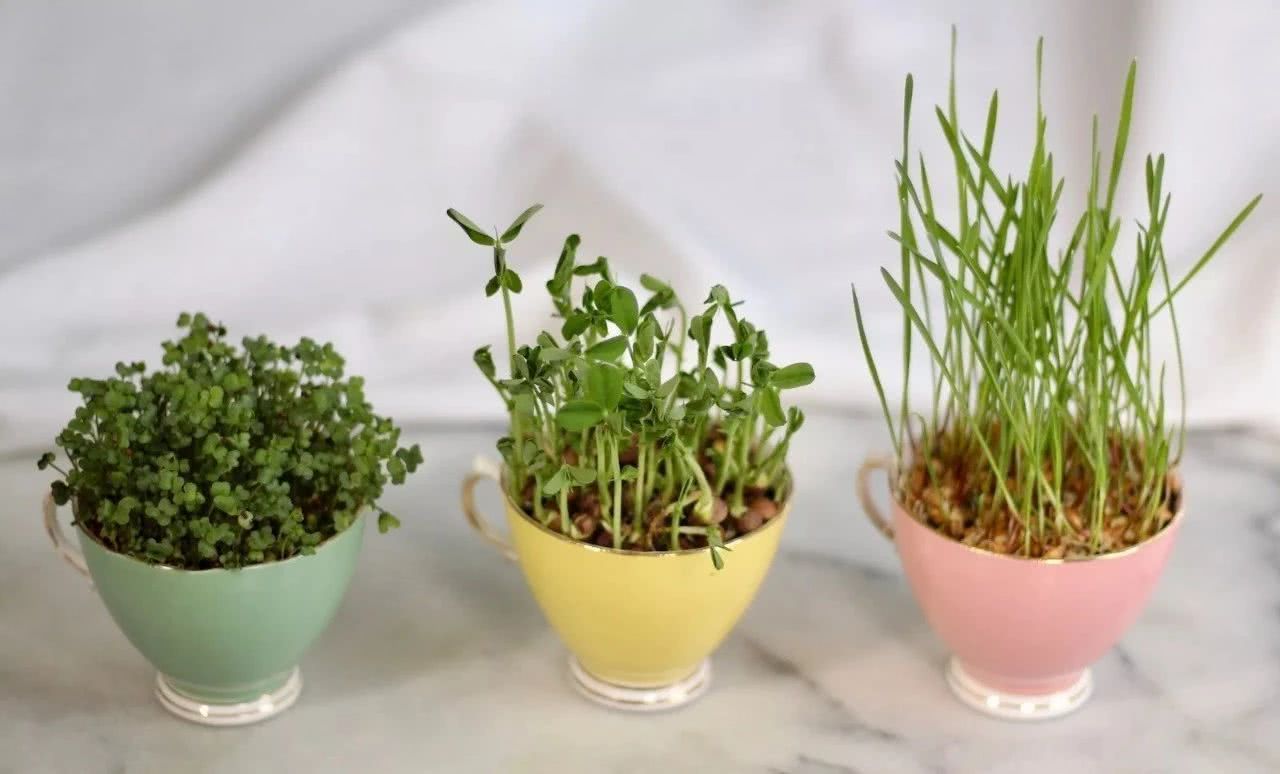Vegetable planting schedule

Every day I lie on the bed with my cell phone and brush the videos of other people's homes.
Watch people pick fresh vegetables in the morning dew, bow their heads and smell the fragrant flowers, walking gracefully in the morning. In addition, he can go to the hall, go to the kitchen, be a good wife and mother, and be a vigorous and aggressive female boss.
And you are extremely envious at the other end of the phone: "she lives so beautifully, if I also have a yard, I also have a perfect opportunity, I still have money, I will be willing to plant all the fruits and vegetables of the four seasons."
In any case, first give yourself a chance to live a beautiful life is really beautiful. The editor will give you the vegetable schedule, and you will watch your little yard arrange, plant flowers and vegetables.
Types of vegetables
(1) the heat-loving type is hit without frost. Such as tomatoes, eggplant, green peppers, sweet potatoes, peanuts, soybeans, edamame beans, all kinds of beans, watermelons, pumpkins, cucumbers, gourds, balsam pears, towel gourd, muskmelon, amaranth, hollow vegetables, corn, taro, sesame, sunflowers, hollow vegetables, etc.
(2) the cold-loving type is not heat-resistant. Cool weather is needed for seedlings, and frost can enhance flavor when they are ripe. Such as Chinese cabbage, white radish, mustard, kale, cabbage, cauliflower, cauliflower, turnips, potatoes, lettuce, lettuce, carrots, celery, beet, spinach, celery, parsley, Chinese cabbage, Shanghai green, onion, onion, leek and so on.
(3) the cold-resistant type can pass the winter, such as broad bean, pea, rape, asparagus, shepherd's purse and so on.
Heat-loving vegetables: to defrost in spring, the weather becomes warmer and the temperature is stable. Heat-loving vegetables that grow slowly should be planted earlier, and some may have to grow seedlings in the greenhouse before defrosting to ensure that they mature long enough. As for fast-growing heat-loving vegetables, such as asparagus and amaranth, they can be planted from spring to late summer and early autumn.
Cold-loving vegetables can be grown in autumn and winter in areas where there is no frost; in areas with frost, they should be planted in late summer and early autumn to ensure that they mature before the frost falls. In cold areas, you can also plant in spring, but you need to raise seedlings in a greenhouse before transplanting them outdoors. Cold-loving vegetables that ripen quickly, such as cherry radish, Chinese cabbage, Shanghai green and lettuce, can be planted in spring, whether in the south or north.
Cold-tolerant vegetables are very hardy during the seedling period, but need warm weather to grow and mature. Therefore, it is generally planted some time before the first frost to make it grow seedlings for the winter. In the cold winter, the seedlings do not freeze to death, but they almost stop growing and continue to grow when the weather gets warmer at the beginning of the next spring.
Selection of planting time for vegetables
With regard to the choice of time, everyone has their own habits, some by season, some by month, below try to provide some vegetable varieties suitable for planting according to different time for friends to choose for reference.
Spring and Autumn and sowing
Vegetables suitable for spring sowing: spinach, green cabbage, amaranth (hot, preferably sown in May), lettuce, eggplant, cucumber, hollow cabbage, leek, sweet potato vine, chrysanthemum cauliflower, pepper, tomato, towel gourd, winter gourd, pumpkin, cowpea, balsam pear, watermelon, lentils, fungus, etc.
Suitable for autumn sowing vegetables (to plant some cold-resistant vegetables for the winter): spinach, cauliflower, black black mulch, garlic, parsley, moss, calf, radish, spring onions, lettuce, lettuce, celery, pea seedlings and so on.
Choose according to the season
Spring (March to May of the Gregorian calendar)
Leek, amaranth, tomato, balsam pear, heart-saving cabbage, towel gourd, pea, string beans, houttuynia, morning pepper, eggplant, perilla, agaric, corn, purple back vegetable, eggplant, gourd
Summer (June to August of the Gregorian calendar)
Hollow cabbage, watercress, cauliflower, rape, cucumber, wax gourd, pumpkin, watermelon, watermelon, chili, balsam pear
Autumn (September to November of the Gregorian calendar)
Chinese cabbage, white radish, cowpea, oil bean, spinach, coriander, red cabbage moss, Chinese cabbage, celery, autumn eggplant, chrysanthemum, lettuce
Winter (December to February of the Gregorian calendar)
Green vegetables, Chinese cabbage, spinach, lettuce, carrots, coriander, lilies, radishes, mustard
Vegetables can be grown all year round
Garlic, spring onions, Chinese cabbage, bean sprouts
Select by month
Vegetable friends in the south can order in advance, while those in the north had better postpone it by half a month to one month:
January: rape, April Man, spinach, kale, lettuce, potatoes, onions, eggplant, tomatoes (tomatoes), chili, taro, coriander.
February: April Mann, spinach, kale, lettuce, potato, onion, coriander, taro, cucumber, seasonal beans, eggplant, tomato, broccoli, pepper, taro, cabbage, radish, kale.
March: April Mann, spinach, kale, cabbage, radish, taro, cucumber, seasonal beans, eggplant, tomato, towel gourd, wax gourd, pumpkin, balsam pear, pepper, taro, spring onions, coriander, cowpea, edamarine, hollow cabbage, amaranth, kale.
April: cabbage, radish, taro, cucumber, seasonal beans, eggplant, tomato, towel gourd, winter gourd, pumpkin, balsam pear, pepper, taro, onions, coriander, cowpeas, edamame beans, cabbage, cabbage, rape, amaranth, leek, celery.
May: cabbage, radish, taro, cucumber, seasonal beans, eggplant, tomato, towel gourd, wax gourd, pumpkin, balsam pear, spring onions, coriander, cowpeas, edamame beans, hollow vegetables, rape, amaranth, cabbage, celery, leek.
June: hollow cabbage, cabbage, rape, amaranth, leek, Chinese cabbage, cucumber, cowpea, edamame bean, balsam pear, onion, radish, celery, cauliflower.
July: hollow cabbage, cabbage, rape, amaranth, leek, cabbage, cucumber, cowpea, edamame, balsam pear, spring onion, radish, cauliflower, seasonal beans, eggplant, tomato, celery.
August: hollow cabbage, cabbage, rape, amaranth, leek, Chinese cabbage, cucumber, cowpea, edamame bean, balsam pear, spring onion, radish, broccoli, green beans, celery, broccoli, peas, carrots, garlic.
September: hollow cabbage, cabbage, rape, amaranth, leek, cabbage, spinach, lettuce, onions, coriander, green vegetables, broccoli, peas, carrots, garlic, radish, cauliflower, chrysanthemum.
October: kale, rape, leek, cabbage, spinach, kale, lettuce, onions, coriander, celery, broccoli, peas, carrots, garlic, radish, cauliflower, chrysanthemum.
November: kale, rape, leek, cabbage, spinach, kale, lettuce, onions, coriander, celery, broccoli, peas, carrots, garlic, radish, cauliflower, chrysanthemum.
December: kale, rape, leek, cabbage, spinach, kale, lettuce, onions, coriander, celery, broccoli, peas, carrots, garlic, radish, cauliflower, chrysanthemum, eggplant, tomato, pepper
- Prev

A flower that represents a lifetime of prosperity.
As you can see from the picture above, the thousand-day red flowers stand proudly, the petals are regular, the color is strong, and when the petals are removed, the petals dry and the color is as beautiful for a long time.
- Next

You can grow vegetable seedlings by adding a little water in a random container at home and you can eat them in a week or two.
Now it is very popular to eat vegetable seedlings, some are also called bud seedlings, and it is also popular to grow their own seedlings. Because it is simple, clean, healthy and cost-effective. Planting vegetable seedlings is indoor sowing, the harvest time of vegetable seedlings is very short, plant one or two stars.
Related
- Wuhan Hospital Iron Tree Blooming Result Was Instantly Frightened by the Gardener Master
- Which variety of camellia is the most fragrant and best? Which one do you like best?
- What is the small blue coat, the breeding methods and matters needing attention of the succulent plant
- Dormancy time and maintenance management of succulent plants during dormancy
- Minas succulent how to raise, Minas succulent plant pictures
- What are the varieties of winter succulent plants
- How to raise succulent plants in twelve rolls? let's take a look at some experience of breeding twelve rolls.
- Attention should be paid to water control for succulent plants during dormant period (winter and summer)
- Watering experience of twelve rolls of succulent plants
- Techniques for fertilizing succulent plants. An article will let you know how to fertilize succulent plants.

